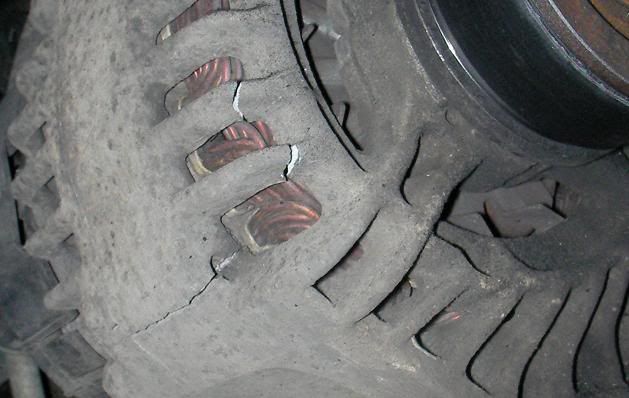Whilst investigating a squeeky pulley/belt yesterday, this poked me in the eye...

It looks to be superficial (hopefully), as the cracking is nowhere near the mountings or bearings.
The Alternator is working fine.
After a bit of searching, I see that a few people have asked about removing/replacing the Alternator ('02 115 JTD) in the past, but no-one seems to have actually done one themselves (or at least they haven't answered).
Anyone done one now, and would care to tell us what has to come off/out?
Thanks.
The (ancillary) belt problem is the tensioner pulley, it's out of line (angle-wise) with all the other pulleys.
Either the bearing is shot, or the mounting is damaged.
It'll need replacing whatever it is.
The belt skips about wildly at the tensioner, and the edge of the belt stripped off a couple of days ago (one complete 'V' strip has gone).
My Daughter was doing some driving practice in it last month, and stalled it so violently at one point that the belt just snapped .
.
I'm guessing that's what also damaged the tensioner.
Edit; Just found cooky257's excellent Alternator guide, thanks mate

It looks to be superficial (hopefully), as the cracking is nowhere near the mountings or bearings.
The Alternator is working fine.
After a bit of searching, I see that a few people have asked about removing/replacing the Alternator ('02 115 JTD) in the past, but no-one seems to have actually done one themselves (or at least they haven't answered).
Anyone done one now, and would care to tell us what has to come off/out?
Thanks.
The (ancillary) belt problem is the tensioner pulley, it's out of line (angle-wise) with all the other pulleys.
Either the bearing is shot, or the mounting is damaged.
It'll need replacing whatever it is.
The belt skips about wildly at the tensioner, and the edge of the belt stripped off a couple of days ago (one complete 'V' strip has gone).
My Daughter was doing some driving practice in it last month, and stalled it so violently at one point that the belt just snapped
I'm guessing that's what also damaged the tensioner.
Edit; Just found cooky257's excellent Alternator guide, thanks mate
Last edited:

